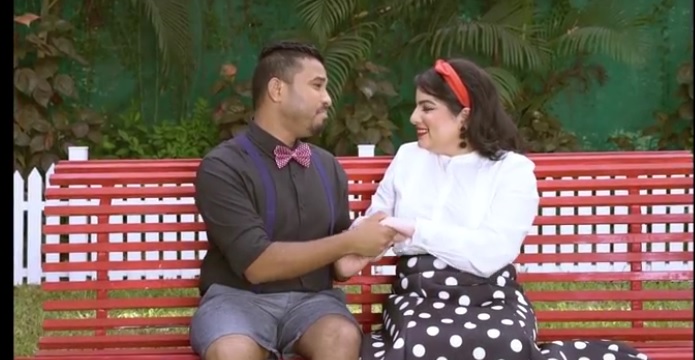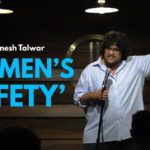**In part nine of the 10 blog series, we profile Mallika Dua and Abish Mathew You can read part one (Kenny Sebastian), part two (Aditi Mittal), part three (Sorabh Pant), part four (Nidhi Goyal), part five (Aadar Malik), part six (Anu Menon), part seven (Vir Das) and part eight (Neeti Palta).
“We’re not each other’s booty call,
Since we are best friends, guess the sex ends,
Now I need more alcohol,
She was my everything, she was my all,
She was the punchline, I was the LOL,
She was the music fest and I was the stall,
She was the bat and I was the ball,
She was Ringo, I was Paul,
I was Night’s Watch, she was The Wall,
I was Heisenberg, she was my Saul,
She was the parachute, I was the fall…
We’re not each other’s booty call.”
For the entire episode, log on to “Modern Breakup Song.”I have been writing blogs on Indian Standup Comedy and how gender is portrayed in humor. This is my last blog in the series. I came across this video and I laughed, smiled and my heart melted… It reminds me of this line Rishi Kapoor lipsyncs, “जख्म खाया है तब हुए है जवाँ”. When people wonder what feminism means in a relationship, I think it means what these lines just said… Equality in love, partners in crime, listening to songs from the same earphones, eating out of the same plate, having each other’s back, singing loudly just in time to camouflage the fart sound… Relationships are often not these… friendships are… I think the struggle is to continue being friends, to subvert the demon of ownership, possessiveness, to uphold the joy of companionship and always keeping in sight the happiness of the person who makes us so happy by just existing. Being friends in love is about knowing when to hold on and when to let go, having the strength and the wisdom to do that.


The Indian standup comedy industry is not only a new entrant in the list of cool career aspirations millennials seek but it is also a burgeoning culture of re-assessing and inserting humor in the ‘Indianness’ of an Indian life. It is through live performances / Open Mic nights that almost all the standup performers launch themselves. After which they financially optimize upon their live performance content through YouTube, Amazon Prime Video, Netflix, SnapChat, Instagram and Facebook. Some of the standup comedy artists create separate content for Instagram and Snapchat.
The live performances and standup comedy stars are managed by new media organizations like East India Comedy, Canvas Laugh Club, Only Much Louder, A Little Anarky, KWAN etc. The target audience for new media is youth who extensively consumes internet. A lot of content is in Hinglish and hence the audience is required to know, understand and ideally speak the same in order to enjoy the humor. Keeping the target audience demographics in mind, we are looking at standup comedy to be popular in Bengaluru, Chennai, Delhi, Hyderabad, Kolkata, Mumbai, Ahmedabad, Surat, Pune, Kanpur, Indore, Jaipur, Vadodara, Nagpur, Lucknow, Patna, Vishakapatnam, Bhopal, Jabalpur, Gwalior and Gandhinagar. The aforementioned cities belong to the Tier 1 and Tier 2 classification. These classifications are arrived upon after calculating income of an individual and house rent expenditure.
The new media standup comedy questions the morality of India’s socio-culture fabric while the mainstream media standup comedy merely laughs at it or worse still reinforces certain questionable ideologies. When women form part of the standup comedy industry, it gives a delectably humorous twist to the otherwise serious topic of women empowerment. At the outset, both seem to be thriving in the entertainment industry. However, which of the category an individual patronizes speaks a lot about that person’s own mindset.




